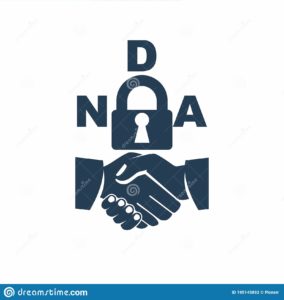Investment: Use of Non-Disclosure Agreements
INTRODUCTION

Non Disclosure Agreements, commonly referred to as NDAs are a useful tool for business transactions. I have represented clients in court cases where the dispute could have been easily avoided had the parties signed a comprehensive Non-Disclosure Agreement. (NDA). The purpose of this article is to show you the importance of having comprehensive NDA’s.
DEFINITION OF A NON-DISCLOSURE AGREEMENT (NDA)
An NDA is defined as a legally bindinc contract that establishes a confidential relationship between two entities. The party signing the agreement confirms that any information that is received shall not be shared with any other person except with the express consent of the source of information.
NDAs are useful tools in negotiation for business investment. This is because all negotiations involve the free exchange of information between. In order to facilitate free exchange of information, investors would make use of non-disclosure agreements. These agreements would guarantee that any information shared would not be used by the receiving party to the detriment of the giving party.
We thus advice all our clients to always make sure they have a well drafted NDA that will protect any information shared from manipulation or unauthorized exploitation by the receiving party.
LEGAL BASIS FOR NON-DISCLOSURE AGREEMENTS IN KENYA

The primary legal basis for Non-Disclosure Agreements is the Kenyan Constitution.
Article 31 of the Constitution of Kenya provides that “Every person has the right to privacy, which includes the right not to have- (c) information relating to their family, or private affairs unnecessarily required or revealed.”
Kenya has also enacted a Data Protection Act, which provides for various rights for the protection of data and information.
Non-Disclosure Agreeements are however a tool of convenience for business efficacy that draw their legal basis on the law of contract.
For a Non Disclosure Agreement to be valid, the following elements must be established:
- Offer: The information giving party must offer to give information with the receiving party.
- Acceptance: The receiving party must accept to receive the information subject to the terms of the agreement.
- Consideration: The receiving party must agree to refrain from sharing of the information except under the terms of the Agreement.
- Intention to Create Legal Relation:- Both parties to the agreement must have an intention to be legally bound by the agreement.
- Capacity:- Both parties must have legal capacity to enter into contract.
SCOPE OF NON-DISCLOSURE AGREEMENTS
Non Disclosure Agreements must be sufficient in scope to cover the interests of the party giving the information. The following aspects must be covered in the agreement.
- Identity of the Parties:- The identity of both parties must be ascertained and set out in the agreement
- The capacities of both parties:- This section in the agreement would deal with the capacity to which the giver of the information is releasing the information, as well as the capacity of the received to receive the information.
- Authorized use of the information- The Agreement would specify the extent to which the giver grants authority to the receiver to use the information. It would cover the situations to which the receiving party will make use of the information.
- Scope of Information –The Agreement would capture the amount and scope of information to be shared.
- Duration of Non-Disclosure- A good NDA would specify the duration of the non-disclosure. Many times, parties decide that the Non-disclosure will be perpetual and never really come to an end. This is because information once given can never be retrieved back.
NON DISCLOSURE AGREEMENTS AND INTELLECTUAL PROPERTY
NDAs are often particularly useful in transactions involving the sharing of intellectual property such as scientific/industrial designs, patents, inventions and innovations. Often, inventors and innovators would need to dislcose information in order to obtain funding for projects. In such cases, NDAs are usually a must-have.
NDAs however do not replace the need to have registered intellectual property. For example, an inventor would still need to register an industrial design and obtain a patent, which would then be coupled up with a well drafted NDA for purposes of complete protection of the inventor’s rights.
CONCLUSION

This article has formed a working introduction to Non Disclosure Agreements. It is our hope that more businesses and negotiators would make use of NDAs as a tool to foster business corporation as well as enhance free flow of information while protecting both parties in the information sharing transaction.


Pingback : Investment: Use of Non-Disclosure Agreements - Advocates.ke Insights
Pingback : Investment: Use of Non-Disclosure Agreements – Legal Insights and Trends In Kenya
Pingback : Investment: Use of Non-Disclosure Agreements – Legal Insights and Trends In Kenya